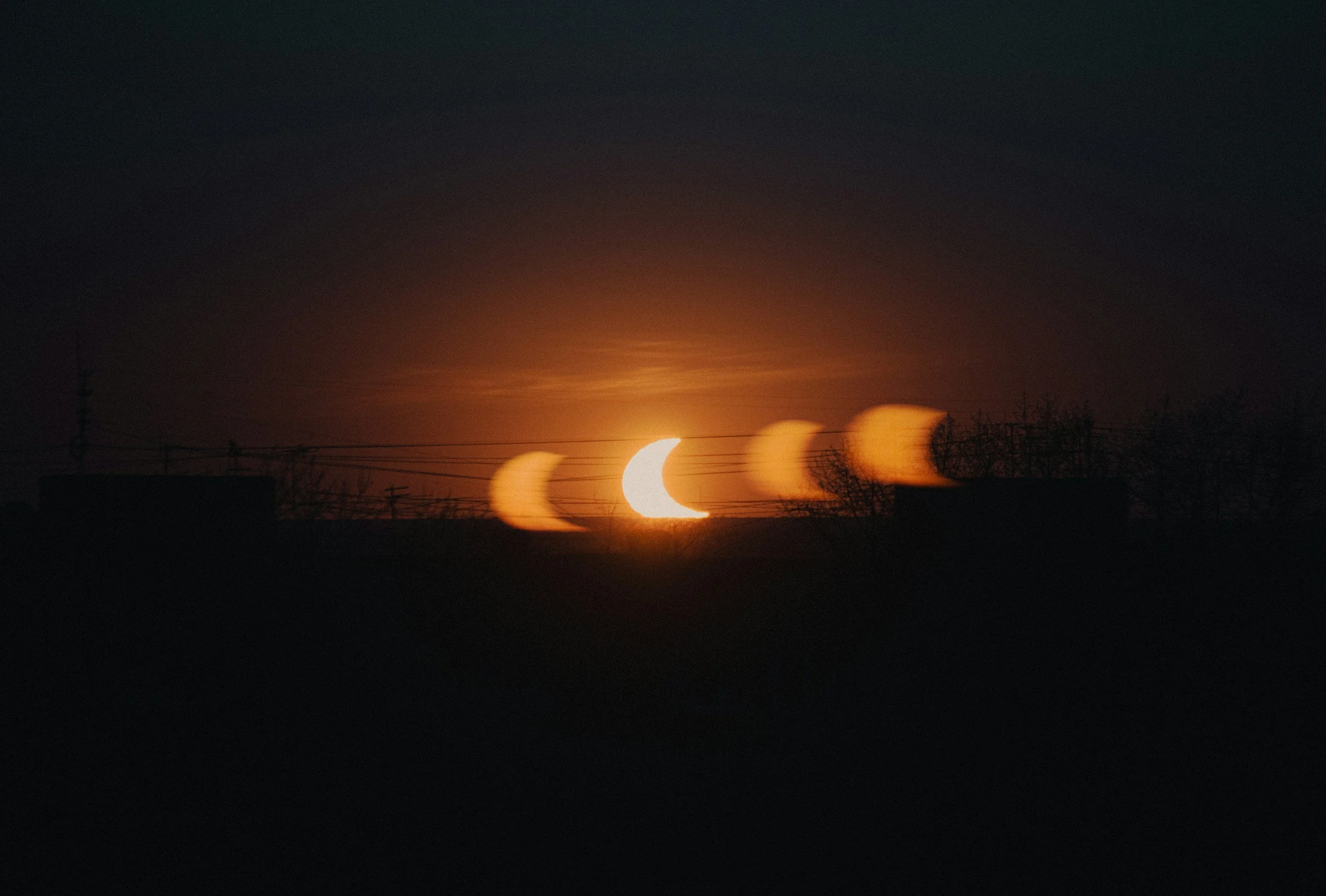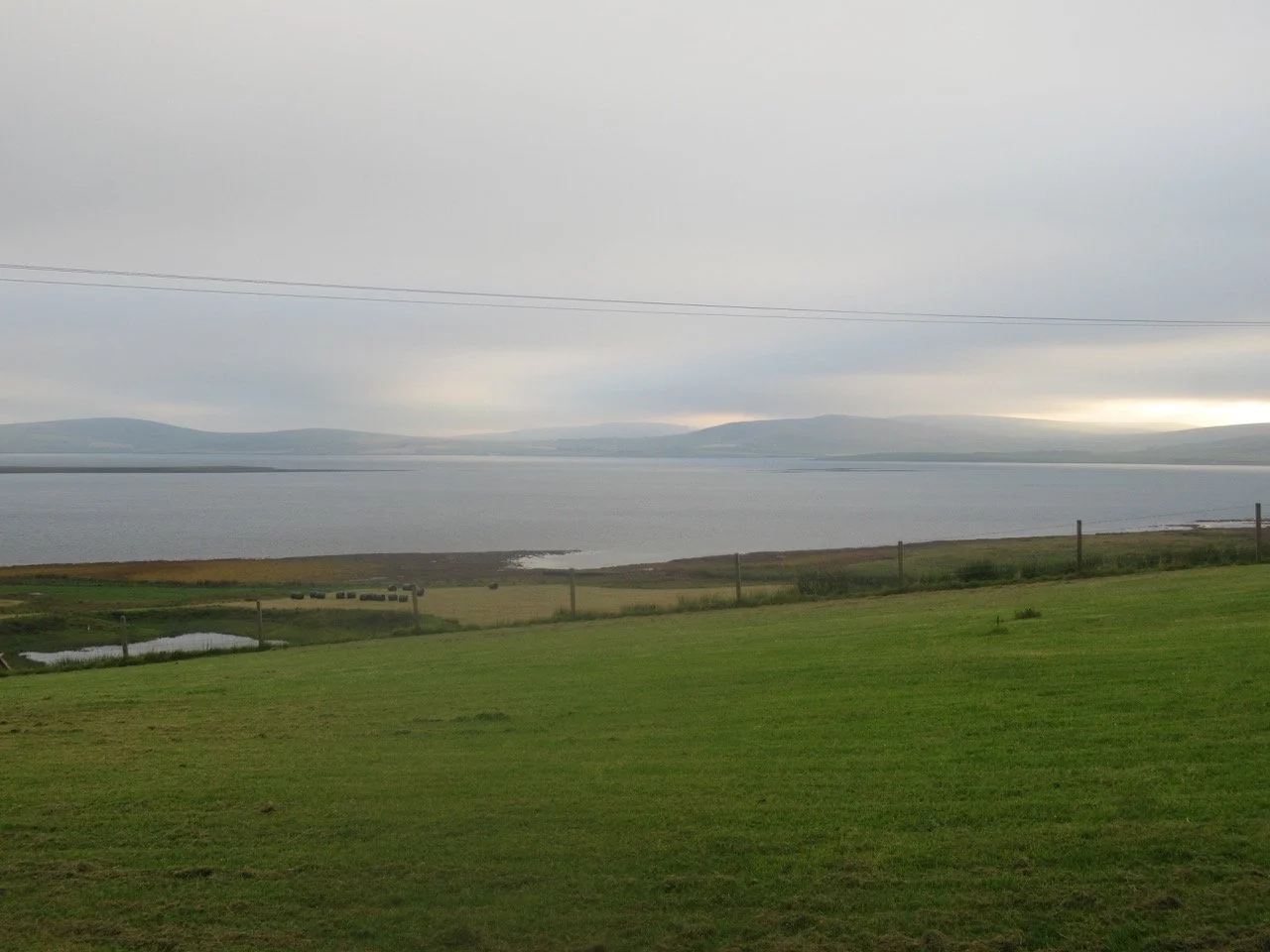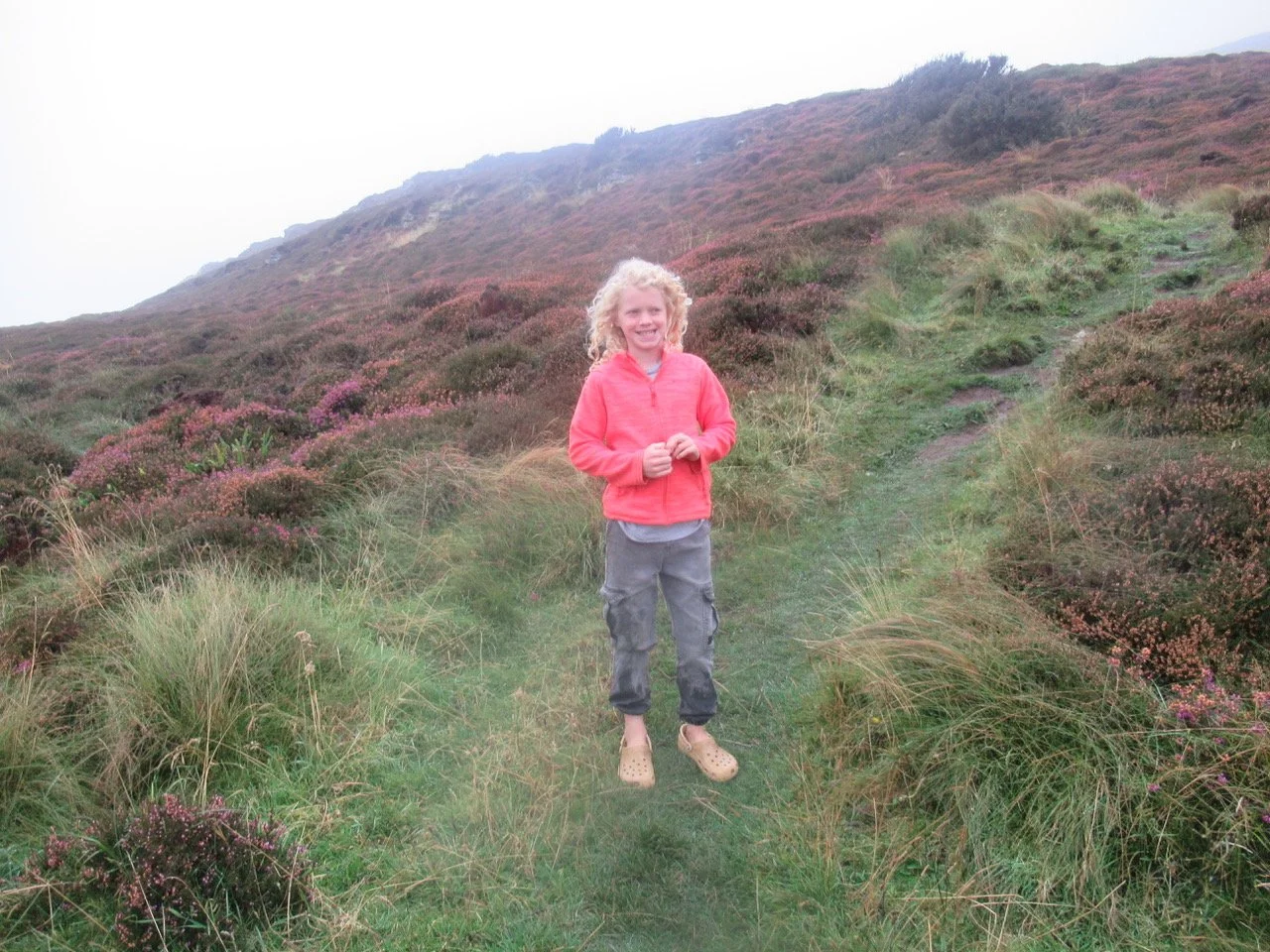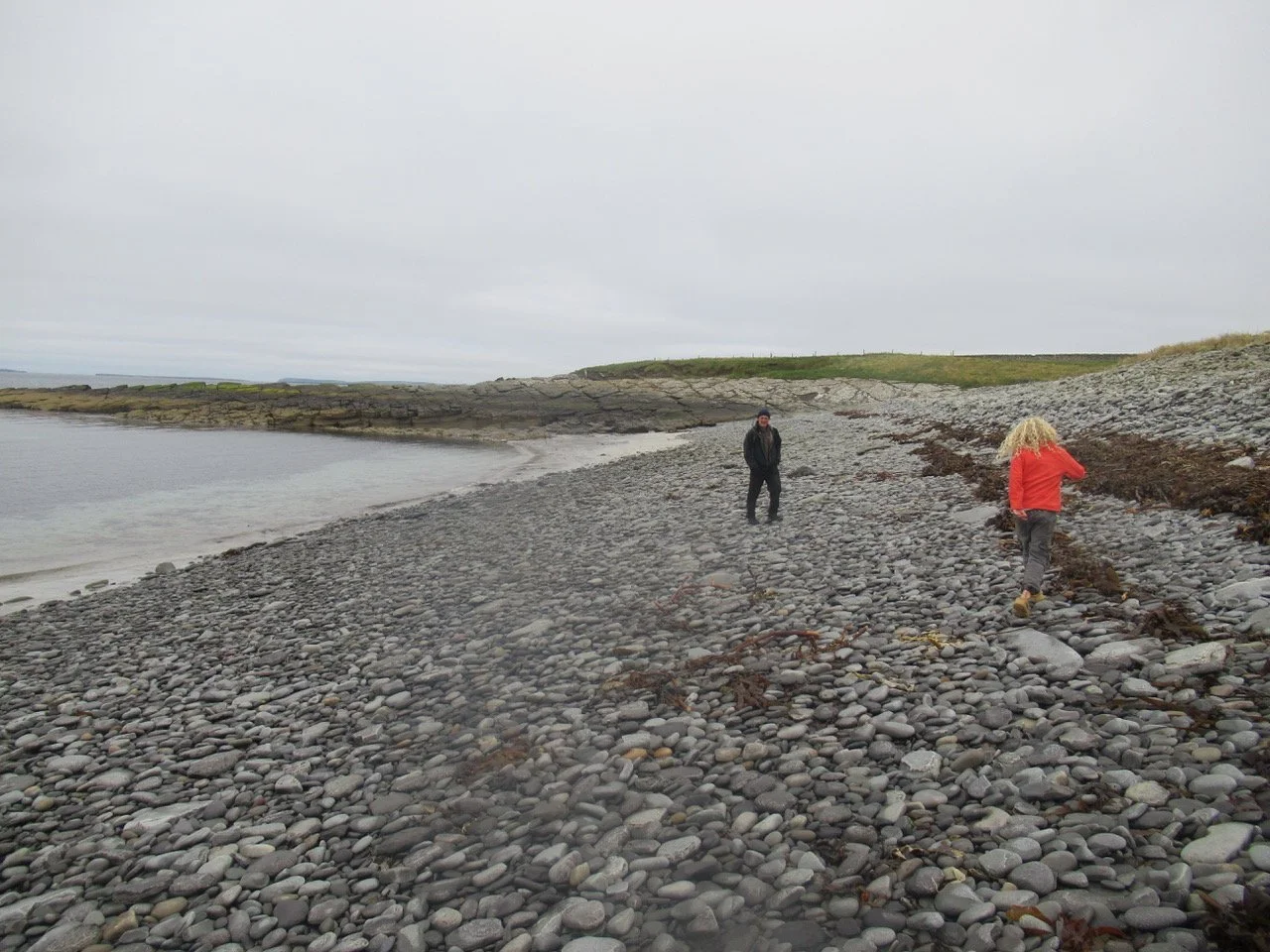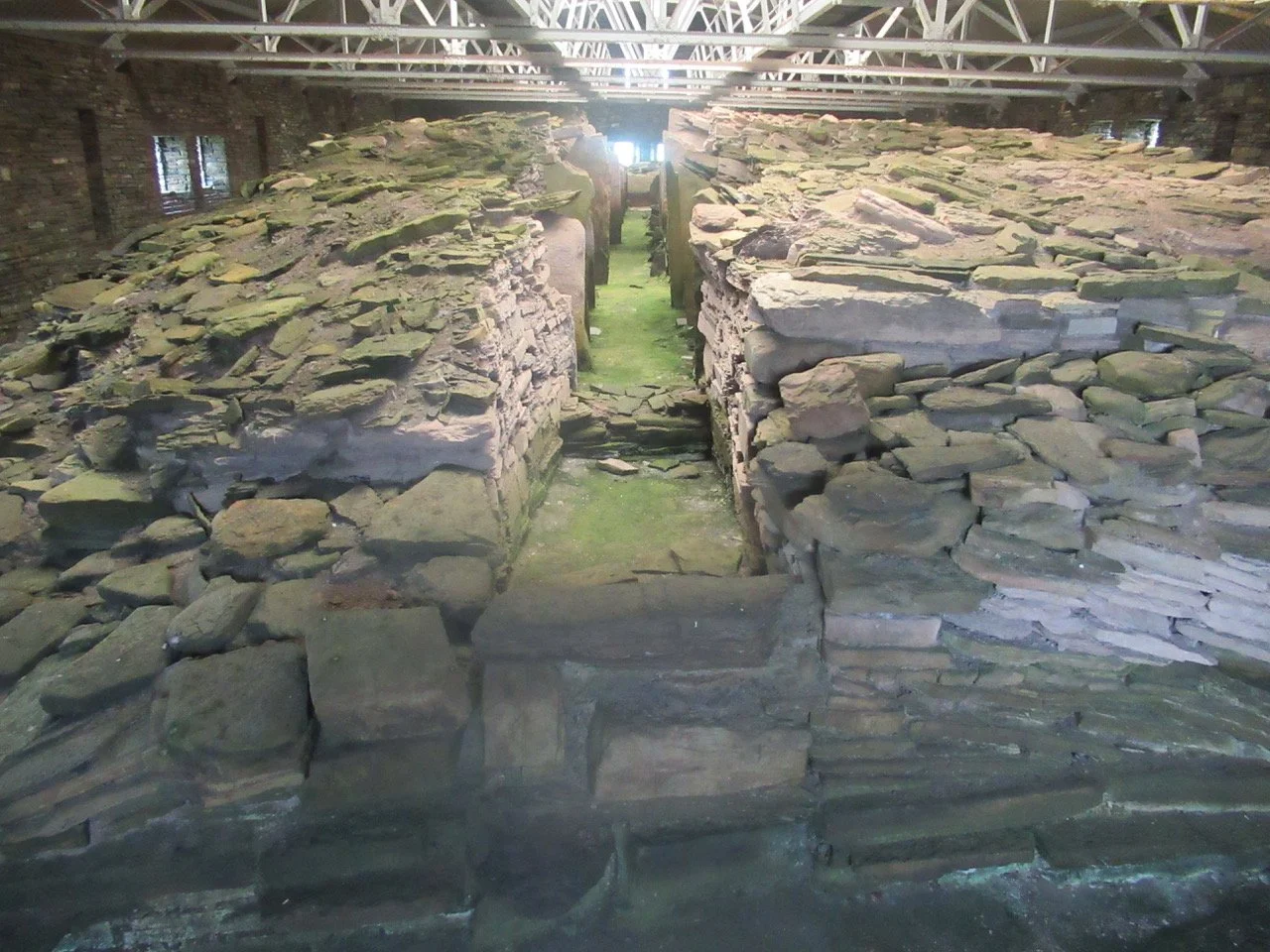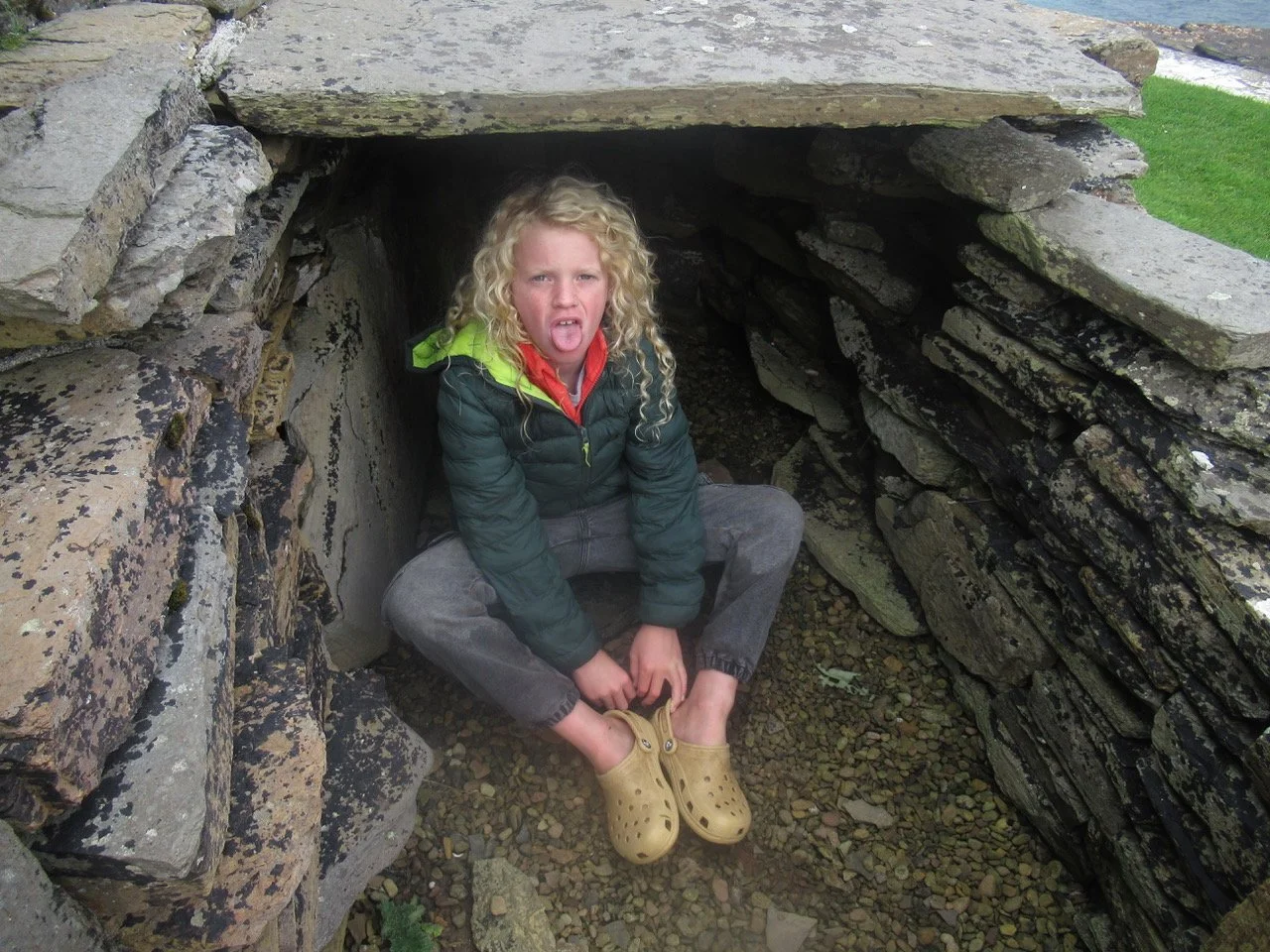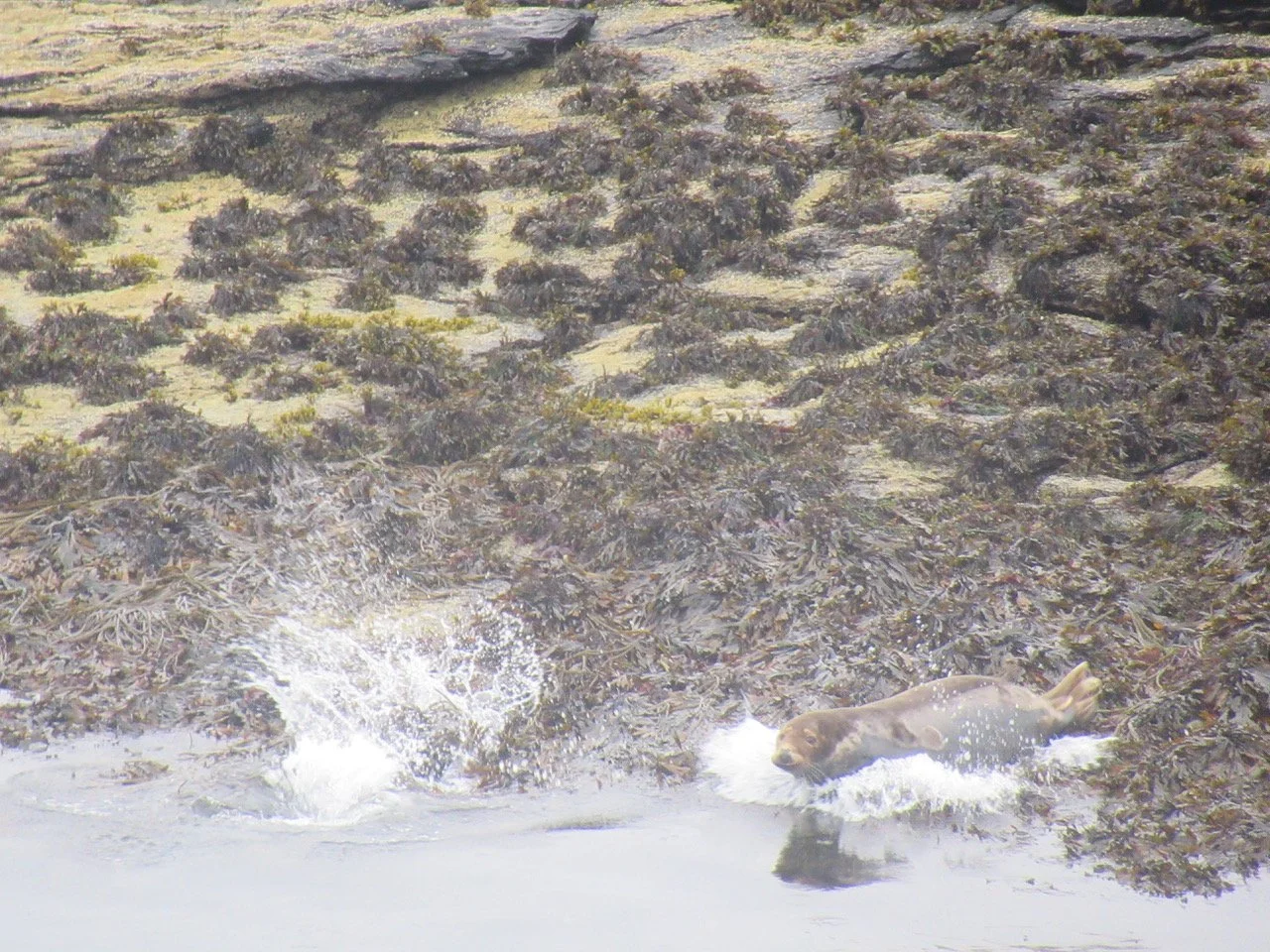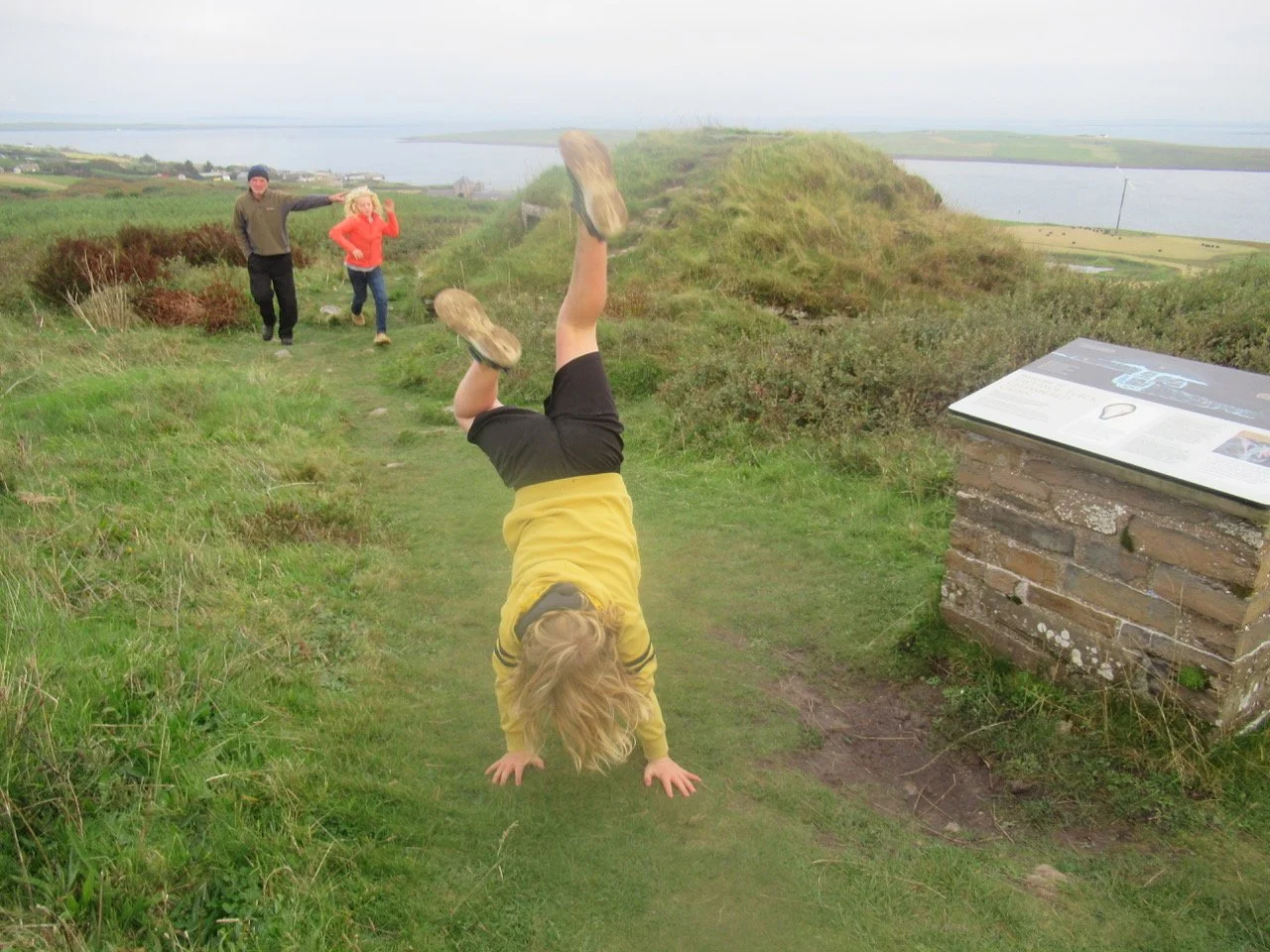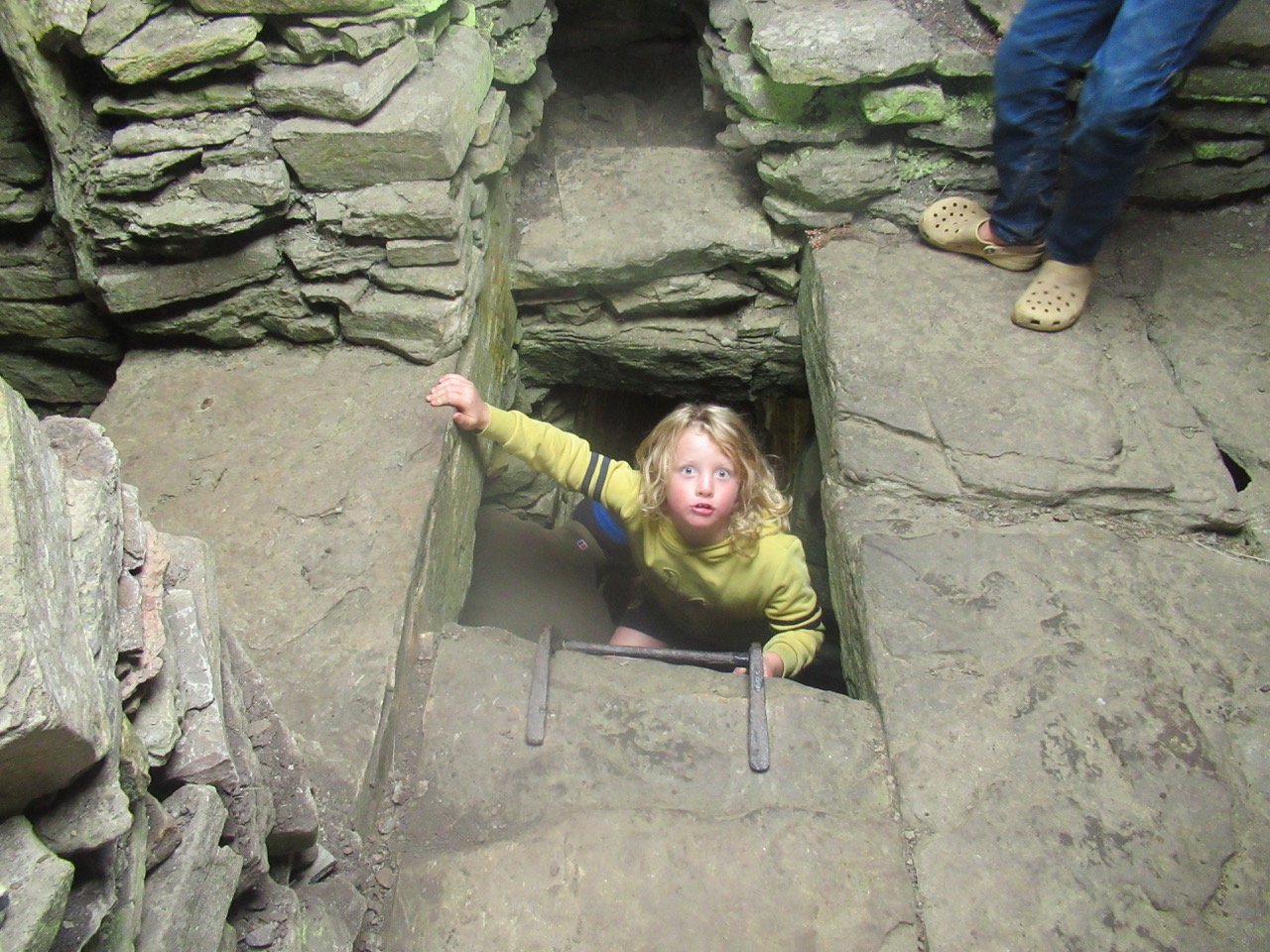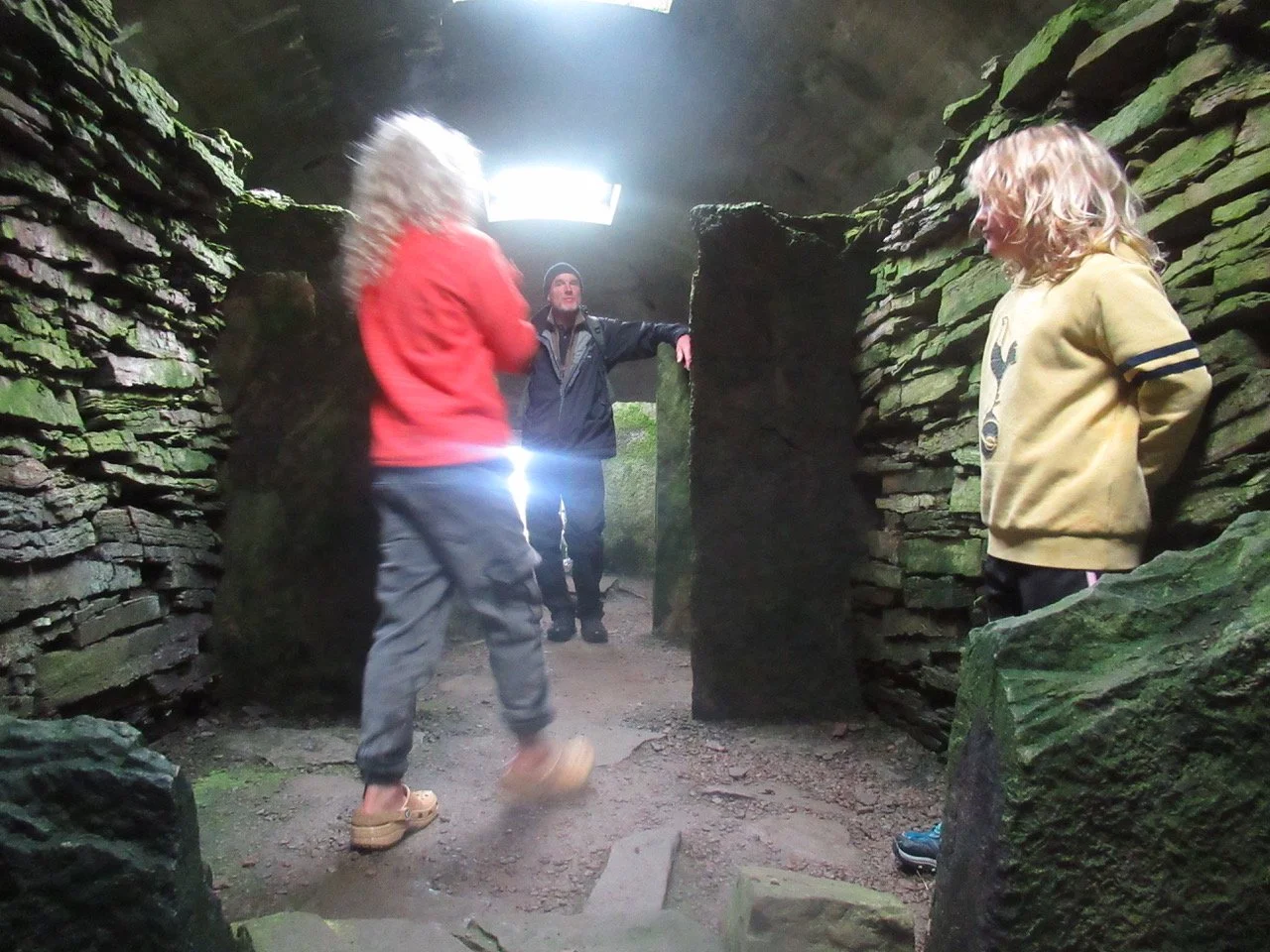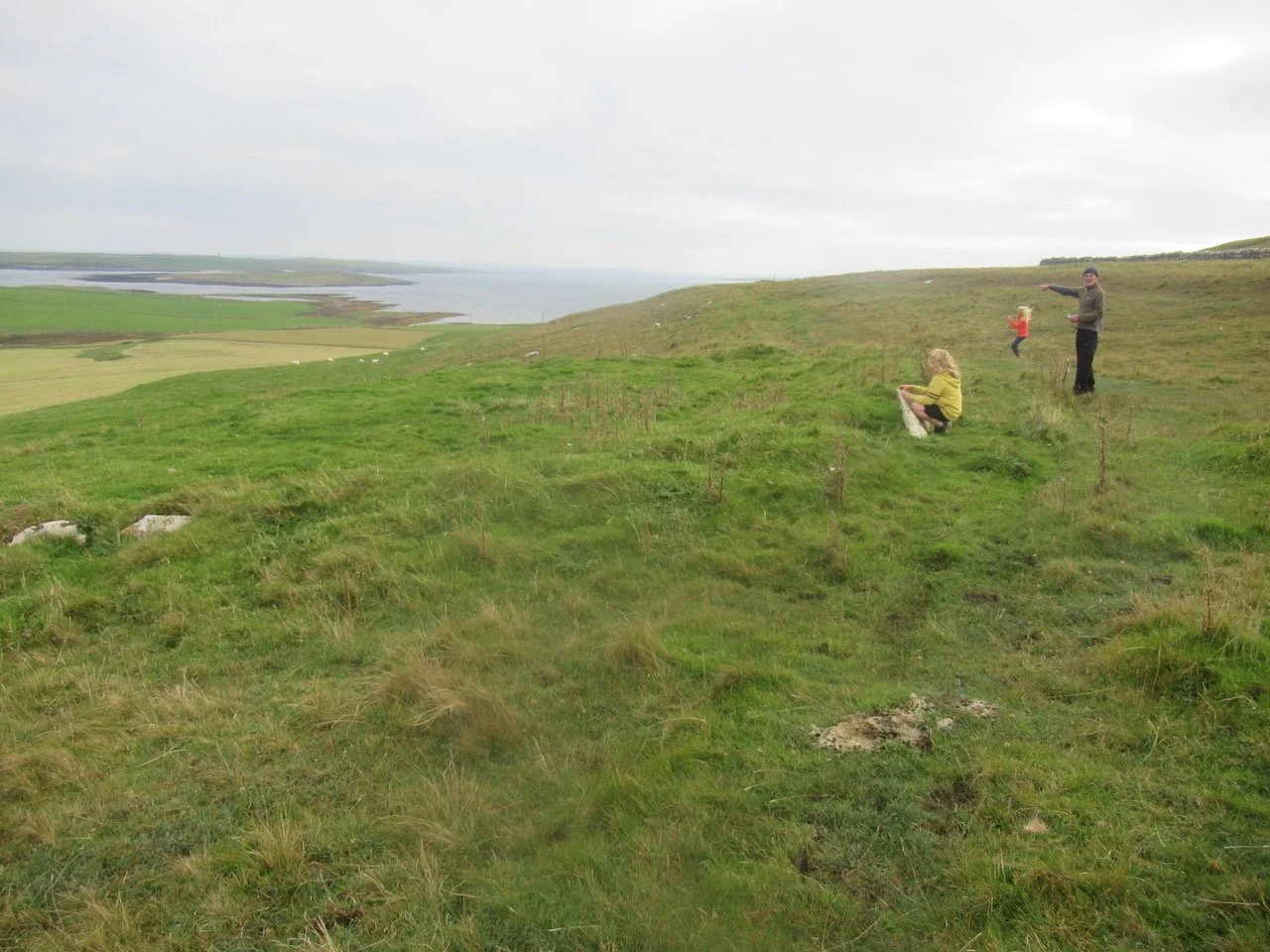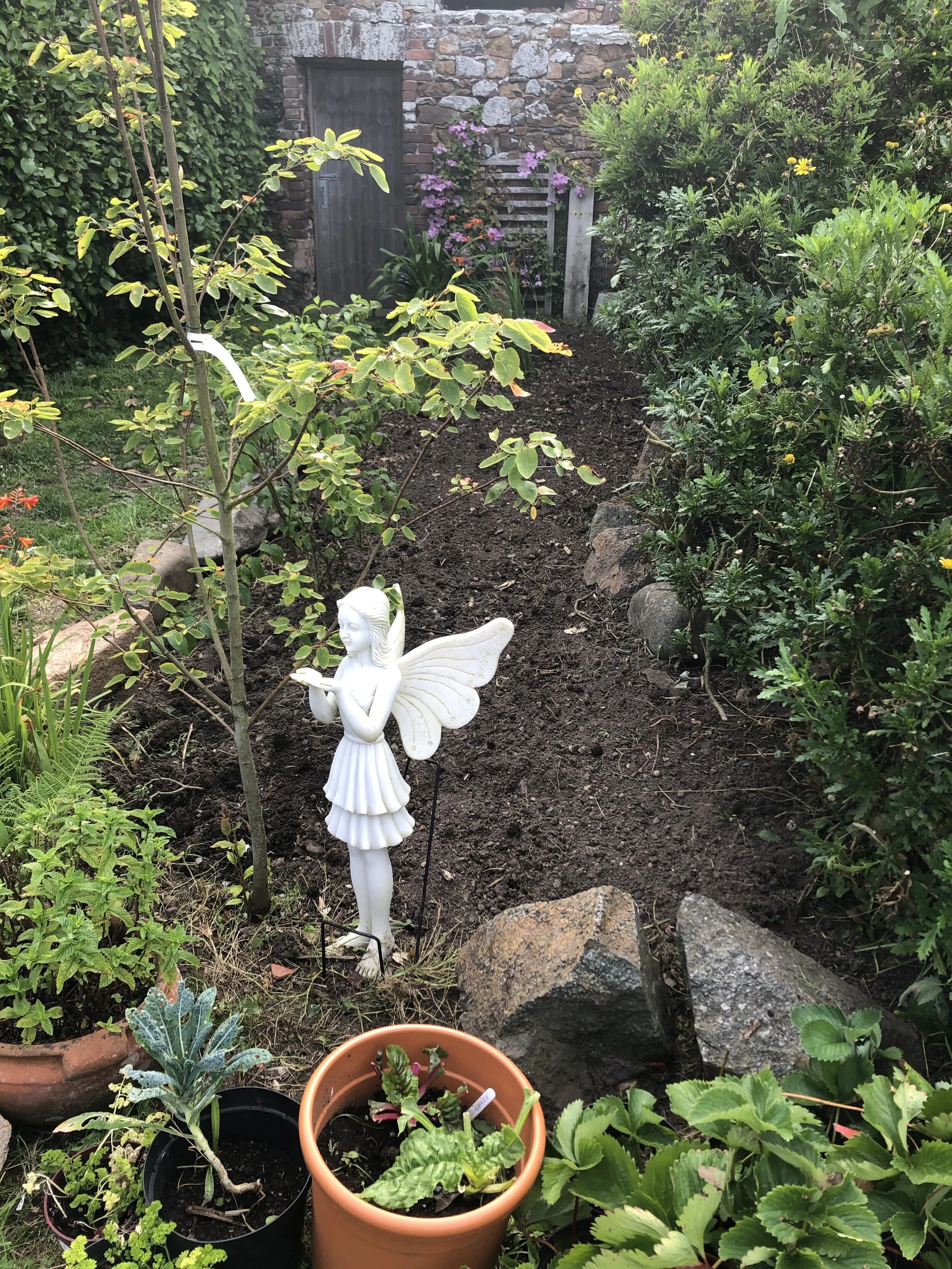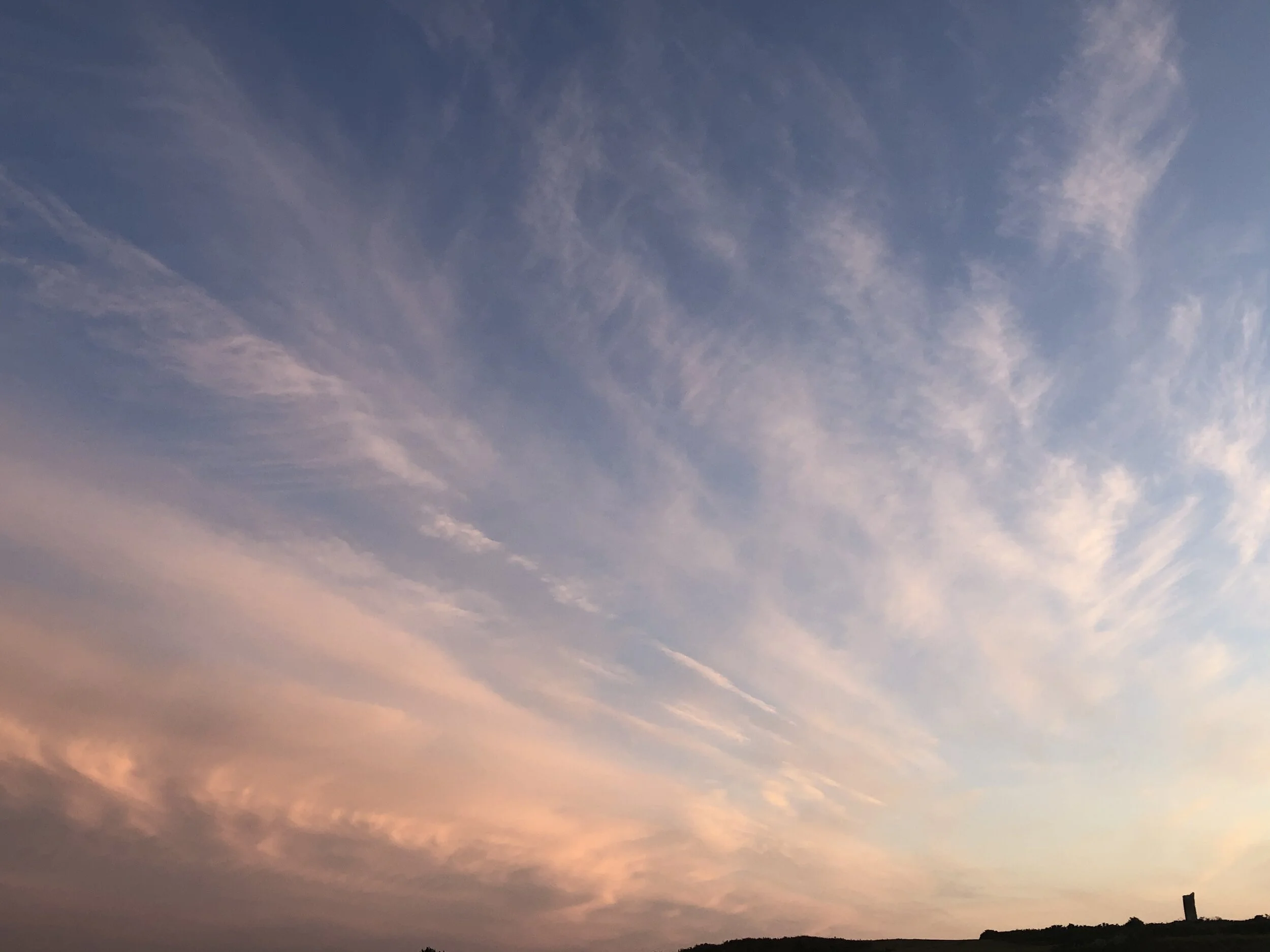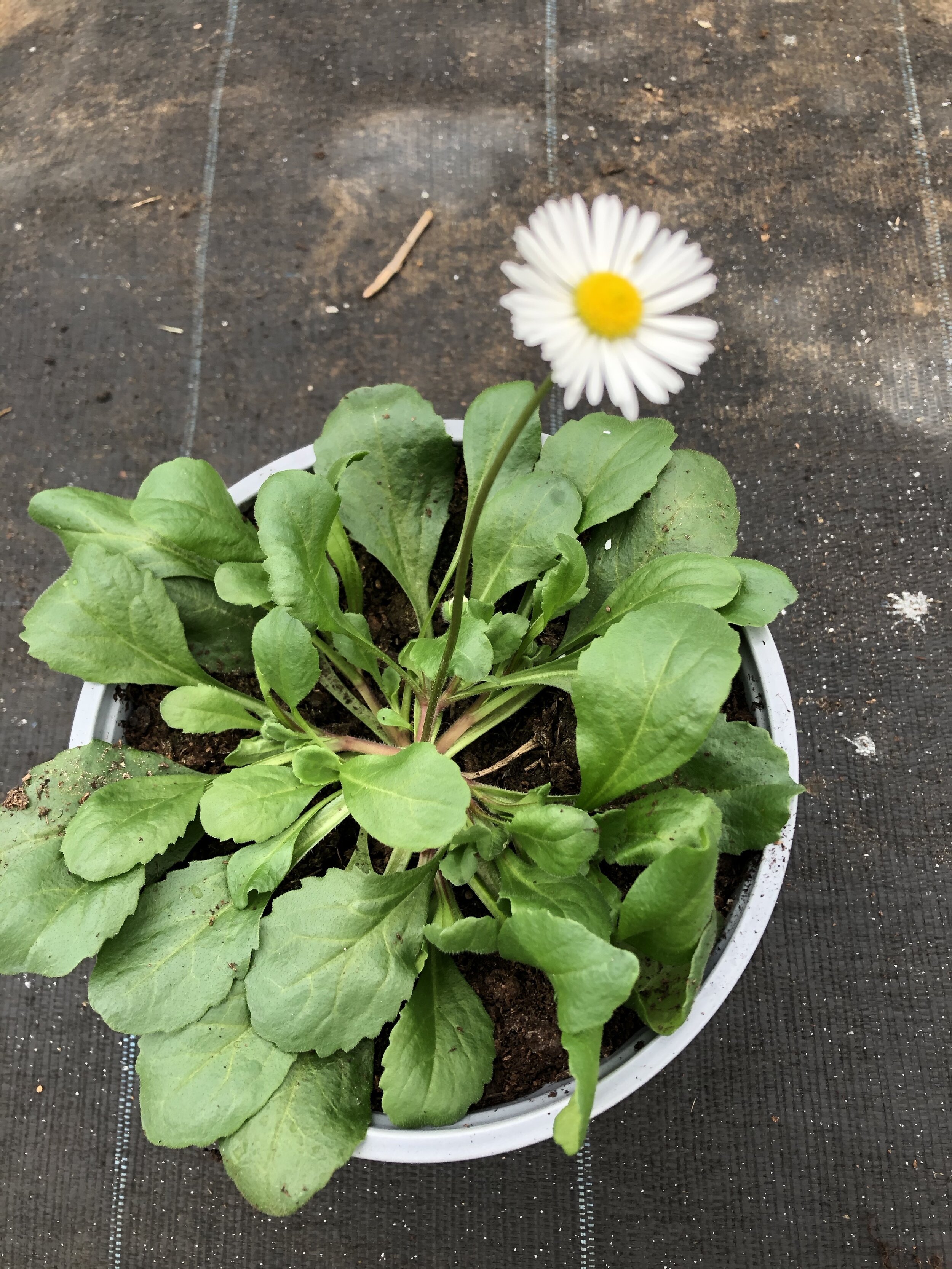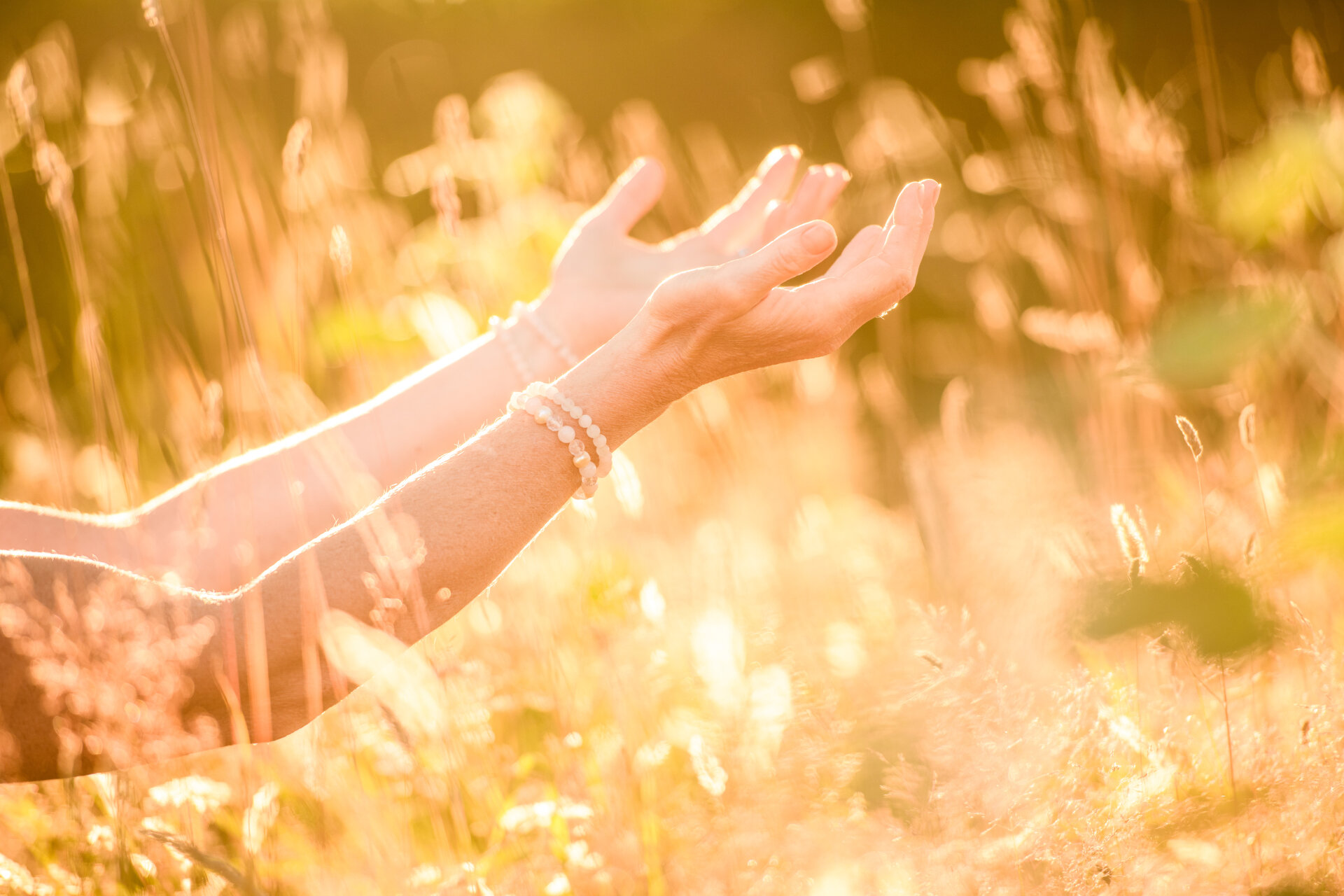
Happy Yule!
Well what a year it has been - so many changes for so many and so many more on their way. The moon is definitely shifting things for us as it nears towards its 18.6 year major lunar standstill in June/July.
Well what a year it has been - so many changes for so many and so many more on their way. The moon is definitely shifting things for us as it nears towards its 18.6 year major lunar standstill in June/July.
I am so grateful to all of you who have supported Beinspired this year. Our community has grown in ways I could never have imagined with so many of you finding the courage to deep dive into the various spiritual practices and come to know yourself on a deeper level, letting go of unhelpful conditioning, habits, beliefs and thinking patterns (Samskaras) in the process. It has been an honour and a privilege to witness the transformation.
We can expect more light flooding in now with Yule upon us (thankfully!). The sun has reached a standstill and won’t continue rising/setting any farther south, and will start swinging more northerly instead. It will rise higher in the sky too, bringing much needed light and warmth to the northern hemisphere, and energy to all those dormant seeds.
The annual solar movements along the horizon from one solstice to another describes a year. Thus the winter solstice, known in the olden times as Yule, celebrates the return of the light, from now onwards the hours of light lengthen each day.
This is a time for us to begin to tend to our seeds too, taking little steps in the direction of our hopes and dreams. The path ahead may not be clear and this can be scary - the unknown and the uncertain have a habit of bringing up fear - but we are asked to trust the light as it appears, just taking one step in front of the other, following the nudges and signs from the universe while balancing the heart and discernment.
Ultimately this is a time to open to greater trust. We trust the sun will rise in the east and set in the west each day. We trust that the inhalation will be followed by the exhalation. And so we must trust in our intuition, inner guidance and inner knowing - we always know what to do, even if the self deprecating ego tells us otherwise or makes us doubt ourselves.
If this does happen - if we get in our own way - then we can ask the question,
“If I keep doing this, how will things be in three months? … in six months? …in a year?”
Typically things will have come worse, sometimes much worse. Let this help to inform your choices and the decisions you make as you head increasingly towards the light, enlightening yourself in the process.
Happy Yule all of you and thank you from the bottom of my heart for the love and the energy which you each bring to Beinspired - even if it is simply reading these blogs!
As a gift, please find another video so that you may practice at home. This is for you Helen and all the rest of you who might explore the letting go that emphasis on the forearms brings. A huge thank you to my teacher, Louise, for helping me appreciate just how amazing the forearms are in helping us breathe.
Thank you too to Helen for all the philosophical sharing and the pranayama practices too.
I look forward to seeing some of you over the festive period and more of you during 2025.
Love Emma x
Happy Samhain!
Today is Samhain, the day of the dead and the dying parts of us that now need to be let go so that we can make way for the new beginnings that the new moon may usher in tomorrow. It’s a poignant time, the veil is thinnest between the worlds, a great day for meditation and communing with other realms, entering them if you can.
At Samhain the dark half of the year commences. It is a truly magical time. We have to remember that death is always followed by rebirth and I love that the new moon appears so soon. Tomorrow then really does mark the beginning of a new year. But remember celebrations today begin at sunset, when the darkness arrives. Light is always born out of darkness. We must remember this. Darkness is fertile with all potential - embrace it!
My concern these days is that new age spiritualism rejects the darkness and the darker parts of ourselves, in its quest to fulfil the light and love potential. Yet we do not know light an love without darkness and dismay, without the anger and the frustration and our sheer rage.
Today offers you the chance to rest and reflect on the past and to dream new beginnings. The seed now hidden in the earth let us not forget, will germinate in its season. So we look for seeds within ourselves. Yet, we also have to remember that there is a timing to everything and certainly the rug was pulled and doors closed for many of us with the recent eclipses and it may be just a little bit too soon to know where we are heading. We might just have to sit in discomfort of the not knowing for a little while longer yet, and that’s OK too.
What’s called for is patience. This is a word which is coming up a lot for my clients lately. Sit patiently and wait. This is a time to rest, renew and clear out the old. The new will appear in just the right time.
Enjoy it all!
Love Emma
Happy Equinox from Rousay!
We are on Rousay for the Equinox. This because there are a number of cairns aligned to this solar event. Many of them are ruined however, yet the island retains the energy, we could feel it overnight and into the sunrise this morning.
Looking for seals
We are on Rousay for the Equinox. This because there are a number of cairns aligned to this solar event. Many of them are ruined however, yet the island retains the energy, we could feel it overnight and into the sunrise this morning.
Beautiful heather
Rousay is a wild place, the kind of place that this family loves. A hilly island, 3km north-west of the Orkney mainland, Rousay has been dubbed ‘the Egypt of the north’ due to its wealth of archeological sites - the reason we are here!
Untouched pebble beach, over a few fences to get here
Smaller than Guernsey with an area of 18.8 square miles, it is the fifth largest island in the remarkable Orkney archipelago. It is sparsely populated - only 250 inhabitants, which is a draw for us, living amongst 62k of people on busy Guernsey, which I certainly struggle with at times. Even Sark doesn’t always provide quite the same ‘getting away from it all’ experience - but I am grateful to have that magical island on our doorstep (and there’s still one space available on our Sark retreat in 3 weeks).
Midhowe
Elijah Midhowe Broch
Inevitably here the wildlife thrives - several parts of the island are designated Sites of Scientific Interest (SSSI) with a RSPB bird reserve too. Eben especially has loved seeing the seals. And has been on constant look out for the otters.
They move fast!
Love a derelict boat or house to investigate
For me Rousay is cairn heaven and I was delighted to find that we are staying - quite by chance - next to Taversoe Tuick Cairn. This two-storey cairn was discovered in 1898 and is the only double decker cairn in Orkney, and only one of two known to have been built in this way. Should you be interested, you can read more here.
The boys at Taversoe
We’ve visited the other cairns too of course. One of the most famous is Midhowe, which is huge and now contained within a hangar to help preserve it. Despite it’s modern situ, it still retains the ancient energy, as do others which have also been subjected to cement roofs for preservation reasons such as Blackhammer and Yarso.
Eben trying to perfect his handstand at Taversoe
There’s tons to explore here from the Neolithic stuff to the Iron Age broths, Viking graves and abandoned churches, crofts, farmsteads and even a boat!
Eben’s energy doubles in the cairns - here at Taversoe
Yarso - everyone suitably non plussed!
We chose to get out on the land, exploring what we could of the coastline and the beautiful heather clad moors, out to visit Yetnasteen, a seven-foot standing stone. I’m going to miss this wild walking back home.
Looking for a stone
Yetnasteen menhir
It’s a fascinating place, very much alive, and reminding us of the simplicity of life, and a slower pace, for now at least, no doubt the hectic pace of Guernsey will catch us soon and we’ll be back into it - but these pauses are helpful headspace providers and with that an opportunity to see things differently, look at where change may be helpful, certainly an increasing move towards simplicity and living increasingly lightly, I am astounded how much waste this family creates in a couple of days, and a drive towards greater patience:-)
What was a cairn - looking for the standing stone
Wherever you are, I hope you enjoy the balance that the Equinox encourages, and the insight it gifts.
Love Emma
It’s Kapha season!
Ahh. Take a slow, deep breath.
In Ayurevda, it is the kapha time of the year now. seeing us through to late spring. The winter/early spring season holds the perfect antidote to the fast-paced movement of summer and autumn This is a time to rest, reflect, hold space, vision, hibernate, and withdraw some of our outwardly-focused energy and redirect it inward.
On the other hand, the calm, peaceful nature of the winter/early spring can also seem a bit oppressive at times and can leave us feeling weighed down, heavy, stagnant, or uninspired. Actually, every season has the potential to either boost or reduce your sense of well-being depending on your natural constitution and any imbalances.
If you have a predominantly kapha constitution, the qualities of kapha (slow, steady, moist, smooth, oily, cool, heavy) will be expressed in your body and mind. Your frame and build will tend towards strong and robust and you will likely have large eyes, a radiant complexion and thick, lustrous hair.
You are probably friendly, compassionate and easy going too. If you know someone with a kapha personality then they are probably a really loyal and nourishing friend. When in balance, kapha types are the teddy bears amongst us, sweet in nature and an absolute pleasure to be around.
However, the heavier qualities of kapha can sometimes leave kapha types feeling a little sluggish and lethargic; they are the soundest sleepers of all the dosha types.
When it comes to getting things done then, kapha-dominated types tend to take their time! However, while they might be slow getting going, they are dedicated and absolutely dependable.
Kapha types often have a sweet tooth and may struggle with their weight, especially when it comes to shedding pounds. With a kapha-balancing diet however they can feel much more balanced.
Here are some of the kapha dosha characteristics (please note that we all have some kapha in our bodies and minds):
How to balance kapha:
Ayurveda offers us changes in lifestyle, diet and medicinal herbs.
Lifestyle
Enjoy daily exercise that gets your blood and lymph moving, such as power walking, jogging, cycling, yoga, swimming, a minimum of 5 days a week.
Staying warm and dry, regardless of the weather
Lively and invigorating music, smells, experiences and company.
Saunas and sunbathing
Trying not to over sleep – early bed, early rise!
A daily massage with warm sesame oil
Getting lots of fresh air
Trying new hobbies and activities, taking risks and being spontaneous – even taking a different route to work each day can help!
Stimulating your body and mind on a daily basis
Dietary
Enjoy:
Foods that are bitter, pungent and astringent in taste.
Warm foods, both energetically and in temperature.
Heating spices—like chili, black or cayenne pepper, ginger, cumin and cinnamon
Whole, freshly cooked foods including lots of fresh veggies (favor warm cooked veggies as much as possible)
Light, dry, and warm foods (both energetically and in temperature)
Honey, in moderation, and never cooked.
Only room temperature or warm drinks and herbal teas
Most beans, mung dal, well-cooked tofu or tempeh, or warm soy milk are all okay.
A minimal amount of high-quality sesame, sunflower oil, or ghee in your daily diet.
Eating your meals at routine times.
Taking a deep breath after swallowing your last bite and heading off for your next activity.
Enjoy coffee and caffeine only in moderation.
Avoid:
Foods that are sweet, sour and salty in taste
Cooling foods both energetically and in temperature – no frozen foods or foods eaten straight from the fridge
Heavy and oily foods such as cheese, milk chocolate, chips, nuts, pastries etc
Heavily processed foods such as canned food or ready-meals.
Overeating or eating heavy meals, especially in the evening
Excessive red meat
Foods or drinks which contain refined sugar or syrup, no carbonated drinks
Deep fried foods
Alcohol except the off glass of dry white or red wine
Herbal medicine
Please book an appointment with me so that you can be prescribed herbal medicine appropriate to you and your body/mind/spirit.
Kapha-nourishing Mung bean soup
Imbolc and being in our nature
It dawned on me today, on Imbolc, how we never say we like going ‘to do nature’, we say ‘we like being in nature’. It’s one of the few things we might enjoy, that we don’t actually ‘do’, we just be in it, we may even allow ourselves to ‘be’ it, nature that is, our own nature, we can’t do that either can we, not really, we are either in our nature, or we’re out of it.
Nature brought me back to myself these last few days. I may have stopped sea swimming, but I am still called to the beach, especially now in lockdown. We’ve been able to visit on the bikes, as a family, in the morning, on the high tide, and E and I have even run in, just to feel the coolness on our skin, to cleanse our energy and invigorate us for the day ahead. It’s not swimming though, my feet don’t leave the ground, I’m in and out so quickly that it’s barely even a dip, more a get wet quick and get out even quicker!
It’s not that we haven’t been doing the home learning, or exceeding our two hours exercise time, but we have made the most of every minute of this, to cycle, run and beach comb, something different each day, to just slow down into nature’s pace, enjoy the time to notice the waves, to hear the birds, to witness the changing landscape as the season changes. It’s a blessing really, a gift, just the family, a whole beach to ourselves.
I love Imbolc though, this is one of my most favourite times of the year. There’s such a magic to it, like the beginning of the inhalation, a spark, something that happens that gives life to the land again, as the breath gives life to us. I’ve been trying to explore more of this in my own practice, to notice what it is, which part of me, from where does it come, the drawing in of the inbreath. It’s a great mystery. One day we breathe out and the breathe never comes in again.
I was fortunate to be with my Gran when she passed on. I’d checked her chakras with my pendulum and they were all in balance. She awoke briefly, to check that my mum was OK, and then she finally took her last breath, her breath having been laboured before then, the death rattle, the nurses had called it. It was definitely an experience I will never forget, because I had a sense that she was in a state of deep peace as she passed over to the other side, the breath extinguished, no more inhale, no more life.
In my practice nowadays, since my teacher has shown me another way to move the body so I might feel more ease and grace and stability in postures than I have ever experienced previously, the inhale sometimes comes upon me as a yawn or deep sigh, like you might get when you have been crying for some time, something that draws the breath in, as if it is called from a deeper place. Imbolc is like that for me. It comes from somewhere that cannot be named.
All of nature is asleep, in winter hibernation, seeds under the ground showing no signs of anything, and yet as if from nowhere, as if the shift in light is enough to set the wheel in motion, and on it goes; the birds start singing again, at dawn and at dusk, their collective tunes remove the silence. The light too changes, there’s a texture in the air that cannot be named, but you know it means that spring is on its way. And the land, the land is changed too, snowdrops and daffodils, bulbs beginning to poke through.
I feel changed as well. Nature beckons me outside again. I long to get in the garden when it stops raining and tend to my plants, which have been left unattended for too long now, hanging on in soggy earth, crowded by weeds, which know my attention has been elsewhere, inside, with winter. “I’m coming soon”, I tell my plants when I venture outside to feed the birds, and I silently pray to the heavens, have we not had enough rain now.
I’m planting a whole heap of different herbs this spring. I’ve already planted lavender and chamomile seeds, it was extremely satisfying massaging myself with my own lavender oil these last few months and being able to use my own calendula salve on the boys’ cuts and bruises (when they let me, sometimes in their sleep, so they can’t wipe it off again when I’ve turned my head, the tricks us mums have to use us mums to help our children along).
Imbolc sits halfway between the winter solstice and the spring equinox, but you probably already knew that. A prehistoric mound at the Hill of Tara in Ireland is aligned with the rising sun on Imbolc morning; when the sun rises, the entrance to the chamber blazes with light. I’ve a feeling one of our dolmens here on Guernsey is also aligned with the sun rise on Imbolc but it was too wet this morning to traipse out there for a morning walk. Maybe tomorrow.
Imbolc is also known in Ireland as Brigit’s Day; a time sacred to the goddess Brigit, goddess of the holy well and the sacred flame. She is a ‘triple goddess’ – the maiden, she kindles the smith’s fire of the forage, the hearth fire of the home and the inner fire of the poet. Her attributes are intuition, inspiration, divination and the spark of life. Her life-giving waters are the sacred springs and holy wells which can be found throughout the British Isles. When Christianity arrived in Britain, the sacred day of the goddess Brigit became the feast day of Saint Brigit.
It’s the spark of light she brings that makes this such an incredibly uplifting and hopeful time of year. Everywhere there are signs of the Earth stirring. Our acceptance of winter is giving way to an urge to move forwards into spring time energy, there is a vibrancy to it, like the energy of an embryo, packed with the potential of human life, and ready for the change ahead. We don’t just plant seeds in the ground, but we plant our ideas too, leaving them to germinate, letting them go to find their way.
Now more than ever, we need to try in our own way, to weave the web of the life we’d like to leave to our descendants here on Planet Earth. Planting seeds that will flower after we have gone, that will allow more of the being and less of the doing that defines our lives these days. We are of course still bound by our old conditioning and life patterns, but lockdown, covid, all of this, is giving us a chance to pay attention and see what needs to be changed, surrendered, let go of with Kālī.
There is order in the chaos of it all, an intelligence that lives within all of us, that weaves the web, brings us together, tears us apart, one cycle after another, a continuous circle of destroying and creating… and here we are on the cusp of another spark, of the turning tide of the breath, of the connection to the holy well within us, our inner fire and the light in our heart. We are living it, Imbolc, it is a state of being deep within our own nature, it can’t be lived outside ourselves.
Enjoy what it brings, and if you can, take time to be in nature and find the stillness within yourself. Maybe you can hear the dreams stirring within you and feel the vibrant energy of the potential that lays ahead.
P.S. I can’t take credit for the beautiful headdress, I left the willow offering instead (and yes, I ran back home as part of my daily exercise!), which I may learn to regret as willow is known in Celtic myth and folklore as a tree of enchantment and dreaming, and is associated with poets, the moon and water. It enhances confidence to follow our intuition and inspired leaps of imagination, it also helps to put us in touch with our feelings and deeply buried emotions. The willow helps us to express these emotions, letting them go rather than holding onto and owning them. The twigs of the willow are flexible and are used to teach us how to go with the flow of life rather than resisting it and repressing our feelings.
Bring Kālī into our lives: the power of change and time
There is no doubt that I lost some of my grounding last week, but I have found the earth again and with that I have felt drawn back to Dr Uma Dinsmore-Tuli’s work and to the Goddess. Not that they went anywhere, just that the calling has been greater this last few days.
I have it in my mind that over lockdown and through the Yoni Yoga classes, I would like to share more on the Daśa Mahāvidyās, the ten great wisdom Goddesses, albeit I hope we might run out of time and lockdown won’t last for ten whole weeks… but one can never be sure! If there’s one thing Covid has taught me, it is to go with the flow and stop trying to make life certain and known!
It’s Kālī who I am especially drawn towards. She is the Queen amongst the wisdom goddesses and contains the whole circle of siddhis, or magical powers, within the reaches of her power. Acquiring a siddhi is a threshold between worldly and transcendental awareness, as a junction between the two and as a passing through, it is a kind of initiation.
Uma proposes that a women may encounter eight female siddhis in her life including:
· The onset of menstruation at menarche
· Menstrual cycles
· Female orgasm
· Pregnancy
· Miscarriage
· Labour and birth
· Lactation
· Menopause
Because the physical siddhis are naturally arising physical experiences, it is important to understand the difference between merely experiencing their physiological aspects as bodily functions, and recognising these experiences as potential siddhis. It is conscious recognition that transforms the physiological and physical experience into a siddhi.
As Dr Christiane Northrup writes, “Unconscious biological instinct and biological instinct that is honed and refined by consciousness and choice are two different things”. Thus if women are able to relate to their emotional, physical and physiological experience in any of the above events as siddhis, or as sources of insight, wisdom and opportunities for spiritual expansion, then they will need to approach them with conscious awareness.
This leads me to Kālī, the greatest of all powers, whose powers of transformation, liberation and destruction both contain and permeate the whole of life. The literal meaning of Kālī is time and she teaches us that time is an inescapable power. As Uma writes:
“Kālī is also time and change from the perspective of cyclical knowledge; for the way that time is measured out in women’s lives is through the repetition of cycles, each one the same yet different from those before and afterwards. When we place this powerful goddess as the protective entity around the cycles of our lives, we embrace the inevitability of chance as a potential for great wisdom and understanding. Kālī in her closeness to death and darkness, shows us the necessity for self-acceptance and surrender. Her mahā-siddhi, or great power, is the power that comes with acceptance of change, and the willingness to let go in order to grow.”
I feel that this is pertinent for us all now. This is a great time for change and for letting go. We were given the opportunity here in Guernsey during the lockdown in 2020 and the opportunity has come again. I really do feel that there is a significant power around us right now, a true opportunity for wisdom, insight, spiritual growth and raising of consciousness, if we are able to surrender into all that life is giving us rather than turning away from it.
As a true pitta kapha, I have always struggled to let go of things, of past experiences and of believing that things have to be a certain way. Perhaps it’s for this reason that I have been drawn to Kālī these last few days, because I know that this is absolutely a time of change, of letting go of the picture we have in our heads of how we think it should be, and opening ourselves up to something that has yet to be lived and experienced.
Uma continues, “At its most profound level, Kālī’s siddhi empowers us to drop the limitations of who we think we are in order to encounter the limitless potential of what we can become. Kālī invites us to surrender completely any ideas that come from a desire to fix or define our sense of identity. To access the unlimited powers of her siddhi requires that we allow a part of us to die, the part that most strenuously asserts that it is the very source of our identity: our idea of who we are”.
The idea of identity is a challenging one for us women, because the notion of what it is to be a woman have been manipulated and changed by patriarchy. I joined a series of lectures on goddess led by a high priestess of Glastonbury and I was amazed to see the way in which the depiction of women changed when patriarchy came in. Prior to patriarchy, images of women were drawn and carved with full breasts, hips and thighs and a soft belly – women were powerful for they created new life and these child-bearing aspects of her were revered and celebrated. Many of the images did not show her face, for this was not deemed important.
Then patriarchy came in and the image of women changed. Now she was sexualised with pert breasts, now covered, seductively, and longer thinner limbs, a face and hair, a clothed body with none of the fullness that was evident in the early goddesses. Her power was taken away. The maiden was objectified by men, menstruation was seen as dirty and birth kept hidden, the mother was no longer revered for bringing new life into this world. The wise crone was no longer celebrated either, her wisdom lost.
Even now, we expand a huge amount of energy on attempting to fight off the signs of ageing. Still society celebrates the body and face of the maiden. Women have a hard time transitioning from maiden to mother, not least because of the demands on, and changes to her body, coupled with the overwhelming reality of life lived with a new baby and the constant sleep deprivation and need for lactation, but because of the loss of identity living as we do in a society that still only values the maiden and her youthful beauty.
As Uma writes, “Whilst it is deeply frightening to let go of the idea that we can always appear to be a certain way, with the passage of time it is absolutely inevitable that Kālī’s power needs to be faced. Such is her power, that if we choose not to engage with its effects through conscious acceptance and willingness to surrender, it will get to us in the end through suffering, grief, bitterness and regret. In relation to the cycles of a woman’s life, what Kali siddhi offers us is the immense power to recognise that the only constant is change itself. In our youth, our menstrual cycle teaches us this lesson over and over again, and the sooner we wake up to what we are to learn, the sooner we are able to embrace our limitless power and potential to live life in freedom”.
It’s fascinating to me, because the menstrual cycle prepares us for the changes ahead, and for what it means to be a cyclical woman living in touch with our cyclical nature, if we choose. We are the micro of the macro and we wax and wane as the moon does too. My boys have a bonkers barometer for me, I’m more bonkers at certain parts of the moon cycle apparently! I’m no doubt more bonkers at certain parts of my own cycle too, and in the moments when I am encouraged to transition from one way of being to another, because it is always messy!
My yoga teacher always says that yoga is teaching us to die well. By that she means that our practice can give us the opportunity to cultivate the ability to let go with ease and grace. Our every practice is an opportunity for this. I clung to my vinyasa practice for many years, and the transition, the letting go, to something kinder and gentler and compassionate, more aligned with who I wanted to be, was tricky for me. My identity was tied up in my yoga practice and on what I felt it was giving me physically.
But the process taught me to trust the practice, that this takes us from one way of being to another if we allow it. But more often than not, we cling on through fear of something, of having to go deeper often, of having to be honest with ourselves to the extent that we can no longer ignore that inner voice that knows that there is more to us than we are allowing, another identity if we can only get out of our own way and die to the world as we know it.
Life supports this process too if we allow it. Those shifts from one way of being to another, of maiden to motherhood and on to wise crone, from menstruation to menopause. And those cycles from one identity to another, of one way of expressing ourselves in the world to another. But all of this with conscious awareness, of being open to life as it unfolds moment to moment.
I feel that lockdown here in Guernsey, the virus then, the corona-virus (corona = crown) is bringing with it an opportunity for significant change, of spiritual growth and a shift in individual and collective consciousness. Not only is the wheel turning again as we move into Imbolc and the stirrings of spring, but there is a turning into something wiser and deeper and more authentic and real if we allow it.
This is a time of conscious acceptance and surrendering, of letting go of who we think we are, and who we think we have been, to become the person we are now meant to be instead. We might not know what that means and how that looks, but we can take comfort in knowing that it will only ever be for our highest good.
If this resonates with you on any level, then call Kālī into your life, but be prepared. She is a force to be reckoned with, a power like no other. She is heavy so that the weight of her power can spiral out to influence the movement of every cycle. She is also the power of time and change, these being the only true constants. So we embrace all of this; we are like stars in the night sky that appear to be fixed but are in fact wheeling around in a constant heavenly dance of shifts and change.
In our practice, we encourage change. We settle into the watery element of the pelvis, spiralling and moving, as we go with the flow in the outer world too. We find our roots, that which holds us steady, and we find our heart too, and open this to the world as if the one and only thing we might ever do with our one life is take the risk and love and create, over and over again.
Mabon blessings - the autumnal equinox!
Isn’t it interesting that on the spring Equinox six months ago, the UK went into lockdown, and here we are on the autumnal equinox and the UK tightens its restrictions to try to control Covid-19 once more, and this for a further six months, taking us full circle to the spring equinox!
The timing is fascinating! Especially when you consider that equinoxes represent two of the cross-quarter festivals of the year, when day and night are perfectly balanced, the cross-over points between darkness and light and light and darkness, depending on where you are in the world and which season you are in.
Here in the west, the autumnal equinox marks the harvest, where we might reap what we sowed, and while the earth remains balanced between light and darl for three days, the days will soon get shorter and the nights longer as we are encouraged to hibernate.
This last six months have been life changing for so many, highlighting our fundamental fear around dying (more on this soon) and the fact that try as we might to ensure certainty in our life, life here on Planet Earth has always been uncertain and always will be, this is also part of the human condition.
And yet there are some certainties such as the sun rising each morning and setting each evening even if we cannot see it, the tides changing, the moon moving through her cycle and the seasons too, they have their rhythm. This is where we find certainty, in the rhythm of life and in our own rhythm, if we are able to feel into it and trust in it.
So in many respects there is something rather comforting about this autumnal shift, even though we can’t be certain exactly what it is ushering in for any of us, but it gives us yet another opportunity to trust in the process and go with the flow, and to appreciate the abundance in our lives, all the harvesting and the bounty this brings.
This balance of light and dark reminds us not only of balance in our own lives (how balanced do we feel?) but of the dualities of life, that we cannot have one without the other such as light and dark, harmony without disharmony, joy without sorry, and how we must find acceptance of all this and not be attached or averse to either way, because that will only lead to our suffering. It is therefore about a balanced perspective, of compassion, non-judgement and the ability to see all sides.
I can’t help thinking that Covid-19 has been helping us to learn more of this lesson. To get out of our comfort zones and our conditioned ways of thinking and start to shift the perspective a little, to appreciate more of what we have and stop focusing so much on what we don’t have, to find the positive in every situation, while appreciating the negative, and not getting attached to either way.
Here I have definitely felt a shift these last six months and I am anticipating further shifts ahead, heck we have another round of eclipses coming up at the end of the year so that will no doubt have an impact. But what I am finding is the manner in which I am learning more about my mind and it is becoming clearer the way in which we create our own reality based on our perceptions of the duality and whether we are therefore drawn to something or turn away from it and how we suffer as a consequence. Also kindness. I am learning a lot about kindness to self especially!
I am also appreciating the simple life, which I have longed for for a while and now finally Covid ushered this in so I am less distracted by the idea of getting off island and being so busy that my head is constantly thinking about the future events. This is a gift in many respects, the opportunity to be more present and I’m grateful to Covid for that.
So today I did celebrate. Sadly the sun was not shining for sunrise as I had hoped, but Eben and I collected leaves from the wonderful trees around Beau Sejour. I’m pretty sure this chestnut is one of the older trees on the island, like maybe 350 years old, E would know but he’s asleep so let’s just say its that old for now! It felt pretty cool regardless! I thought it rather appropriate that Eben was munching an autumnal apple when I took the photo!
We went home and we painted the leaves and made prints, which we are intending to cut out and send to family members around the world, Eben is desperate for some post to come back to him, so we figured we should get the ball rolling by sending stuff our first! This was fun, even though it did mean the paint went everywhere, but I suppose this is all part of the fun!
We planted acorns too. Many of you know we have established our ‘Plant A Tree Project’ and so we are making the most of any opportunity to grow trees that can be planted by others, children especially, in their gardens and spread our love of trees, and make the world a better place in the process…it’s the small things that become the large things, or so we hope!
We went blackberrying on our way back home from Saints for our swim this afternoon and I made a blackberry and apple crumble with apples from my neighbour’s apple trees and some gluten free oats and seeds. It was yummy!
I’m curious to see how life unfolds this next six months and as much as I love summer, I have finally accepted our retreat into the darkness of winter and shall embrace all the gifts that this brings. With any luck it might continue to shine a light into the shadows, not just individually but collectively too!
Mabon blessings! xxxx
Happy Lammas!
Today is Lammas, the celebration of the first grain harvest, a time for gathering in and giving thanks for abundance. This cycle continues to Mabon or the Autumnal Equinox bringing the second harvest of fruit and then Samhain and the third and final harvest of nuts and berries.
The word lammas is derived from ‘loaf mass’ and is indicative of how much the first grain and the first loaf of the harvesting cycle was honoured. I thought I would honour this today by making bread for the first time, at least on my own.
In theory the fullness of the present harvest already holds at its very heart the seed of all future harvest. I have had a sense of this recently with my medicinal plants and I’m pretty sure they have been telling me to get them out of their pots and get them into the earth so that they can self seed. I spent today preparing. We had to move a whole heap of granite from out of the pigsty, to make space for about 150 saplings that we are nurturing as part of our Plant A Tree Project (more on this in the spring). It was hard work!
However in many respects this was the easy bit. Once we had shifted as much stone as we could for now, and moved all the saplings, we then had to prepare the earth in a spot in the garden which has not been dug over before. I was up for the challenge though and possibly the mood I was in, what with the full moon approaching and here in my dark days of releasing, I set to task with the spade and turned it all over while the family watched a film!
This morning I had it in mind that I wanted to establish a moon garden, a part of the earth dedicated to the moon in celebration of Lammas, but I hadn’t figured out how that might work. However as I dug the earth I suddenly realised that this patch of land faced the rising full moon. Perfect! I had prepared my moon garden without even realising it; I’m pretty sure my medicinal plants will like the space and we’ve let it settle with the waxing moon energising it. With any luck the plants will settle into the ground on the waning moon and rest easily into it.
We visited La Gran’mère du Chimquière this afternoon. I left some bread and a bouquet of herbs gathered from the garden, I left them perched on her right shoulder as E said they’d attract rats if I left them on the ground; he’s forever the health and safety one! I love this goddess, she’s so calm and so centred and so peaceful. There’s no drama with her. I know that sounds ridiculous but when you see her, and especially when you touch her you’ll know what I mean.
I went out to La Varde this evening too, with my friend Chris to have a look at the goddess who resides within this beautifully calm and peaceful space. It really is a wonderful place and we felt welcomed and awed by it. The guardians were there as usual, keeping a watchful eye, and there was a quiet opportunity to say thanks. The skies were magical when we left too, as if the earth was kissing us with her beauty - or perhaps we were kissing her too.
I don’t have expectation about the harvest, I think that’s what has made the growing of the plants so enjoyable. There has been no expectation, and no attachment to the fruits of my labour. That is except for one little fella, the liquorice! I had been told that liquorice is challenging to grow from seed but I was confident, because I had no reason not to be, perhaps a little arrogant when I reflect on it, after all, the rest of the seeds had been so abundant for me (apart from Culver’s root, that was tricky too!).
My competitiveness came out with the liquorice and I did my best to nurture the seeds, but to no avail, or so it seemed. And then finally a shoot appeared and I was excited, it looked like I might get my liquorice plant after all - non-attachment out the window with this one! I watched it grow and tended to it with lots of love and Reiki and was curious because the leaves didn’t look like what I imagined liquorice would look like.
And alas there was a reason for this, because last week a daisy blossomed from what I thought was my liquorice plant and I laughed out loud at the cosmos joke, reminding me to let go of expectation and attachment to the fruits of our labour, and to grow for the love of it, not to feed my ego. It was a fabulous lesson and never more so because daisies represent joy and happiness; grow for the joy of it! Lesson learned! I’ll try a liquorice next year instead!
I am grateful, from the bottom of my heart and from all of my being because those little seeds that Fi offered out to her friends on Facebook just before I deleted my account has been life changing. A whole new world has opened up to me and I have discovered or perhaps rediscovered a love of growing and of tending to the earth and I can’t get enough of it. I am thoroughly enjoying drying the flowers and leaves in preparation for more potions and teas.
Recently I’ve using dried lavender, rosemary and sage to make bath oils, which just smell divine and are healing in their own ways, I have made bath salts with them, and this just makes for such a beautiful bath experience. The sage is very cleansing after energy work and the lavender definitely prepares you for a good night’s sleep. Nature knows best and I am grateful to have the opportunity to learn more and be guided by her. I’ve got calendula flowers soaking in almond oil out in the moonlight, I’m excited about making that into salve in a few week’s time. This all infused with Reiki from seed to salve, I’m grateful for that too.
I’m also grateful for my family for all their love and support, for the challenges and the joys, the sleep deprivation and the minecraft and the guns! There is never a dull moment and I love that they entertain all this, the witchery stuff, the hanging herbs drying in our kitchen, the time spent in the garden, the help with the potion making and the fact Elijah loves nothing more than that “yellow bath stuff”! They indulge me with my Reiki requests, they are both attuned now and will slowly learn what this means, for now it is magic hands and that’s good enough for me.
It’s a marvellous beginning harvest and I hope for you too. I can see the results of the seeds planted, and yet i in ways I could never have imagined, a bit like the daisy. Sometimes things just happen. In the last few years I have really steered away from vision boards and forcing an outcome, because I noticed that in my life the most life changing things have just entered from nowhere without any effort on my part. So I celebrate that too, the great mystery and being OK with that, with the not knowing and just seeing where it all goes as you try to keep in alignment; that’s all you need to do. Plant the seeds, tend to them and keep open to all possibility.
Sending love on Lammas.


